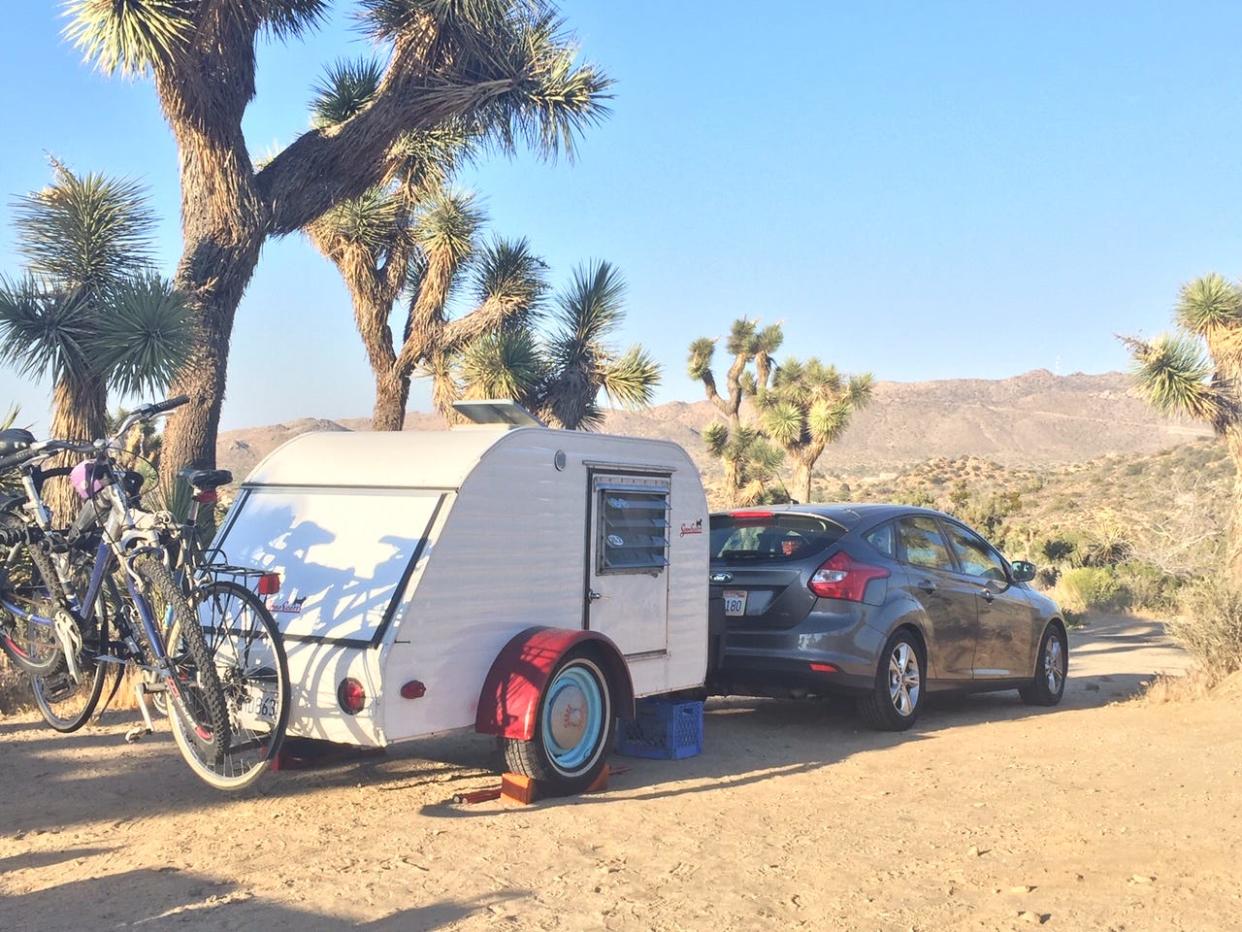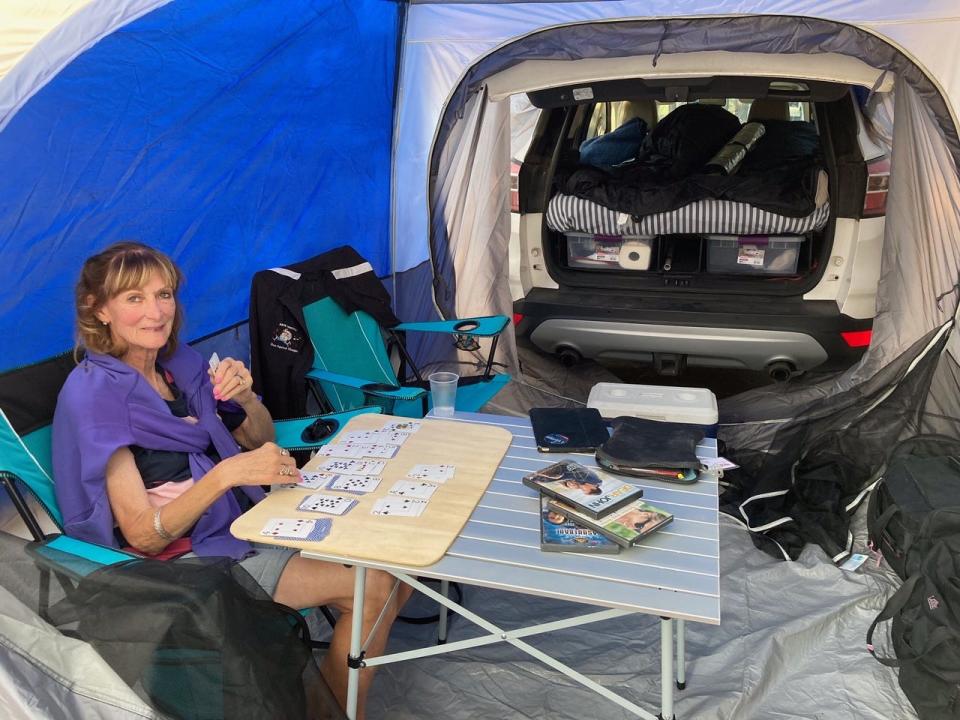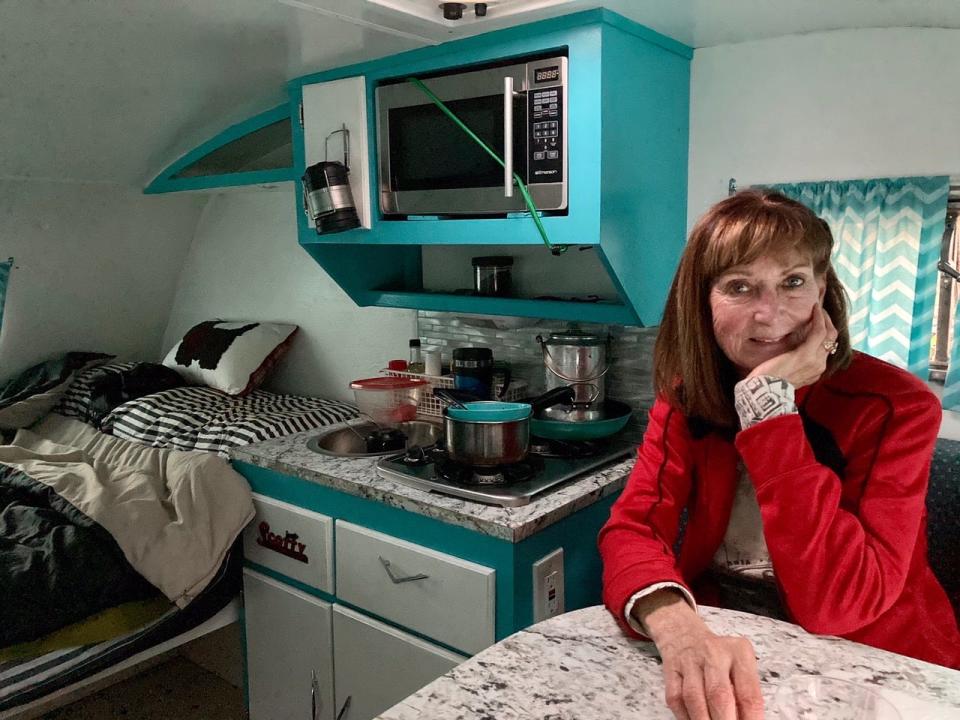Here's what you need to know about camping in tents, SUVs and travel trailers

My spouse and I, and numerous friends, have spent a lifetime perfecting the art of camping. That means anything from hiking and backpacking overnights to car and tent camping to small to midsize SUVs and trailer camping. Today, I shall skip past the hiking/backpacking idea; while we’ve remained hikers, we have aged out of the desire to do any serious backpacking (apologies to you, serious backpackers).
This column will capsulize our camping adventures and experience in several formats: camping with your SUV, a modified SUV and tent package, or moving up to small or slightly larger trailers. We’ll also offer a few tips on comfort, the economy of operation (gas mileage, insurance), up-front costs, and panache.
SUVs, modified for storage and sleeping: I’ve taken our 2017 Ford Escape, and with scrap 3/8” plywood, elevated the floor by 7 inches (with the backseat folded flat) which allows stowing of four plastic storage containers underneath, miscellaneous camping equipment and provides a sleeping area 6‘2“ long by about 4 1/2 feet wide, cozy for two people. I also made black-out curtains for privacy that affix to the inside of the windows. Overall, cozy and fairly comfortable, your vehicle will get great gas mileage; the upfront cost was minimal, though the result is low on the “panache-rating scale.”
Tent/SUV combos: here, we include rooftop outfits and free-standing tents connected to SUVs. They have exploded in popularity in recent years. We have several trips planned across the country and plan motel stays or friends' overnights for much of those trips, with the idea of using our SUV for occasional camping stops. We purchased a Napier Backroadz SUV Tent for about $250 and have used it several times. It provides a 10 x 10 room tent addition, nicely connecting to the open back hatch of our Ford Escape. Overall, you are more comfortable with the roomy tent, your vehicle still gets excellent gas milage, the upfront cost was only a bit more (cost of the tent), and when tent is attached, your “panache-rating scale” jumps, as many campers want to see how it connects.
We have not yet tried out the folding rooftop units, which range from $1200 to about $3500 (and my wife would not be happy to climb a ladder six feet to the top of an SUV), but these units appear to be popular with the 40 and under set.

Trailers, tiny to small; new, used vs. classic: we currently own two classic trailers, a 1958 Scotty teardrop trailer, totally rebuilt by West Virginian 10 years ago, and a 1964 Scotty Sportsman, which I rebuilt five years ago (the rebuild took about 500 hours and over $5,000); unless you are a serious hobbyist, avoid a trailer that needs a total rebuild.
Teardrop trailers, classic to new trailers: Teardrops are typically the smallest, with the trailer measuring 4 to 5 feet wide, 8 to 10 feet long, and 4 to 5 feet in height. They are generally the smallest, lightest, and most affordable trailer families. Benefits of small to slightly larger camp trailers; they give you hard-sided camping (good for peace of mind if you worry about bears, as does my spouse), are fairly light, and don’t kill your tow vehicle’s gas mileage; fellow campers will want a look at your tiny home.
Our teardrop is more comfortable than a tent, though towing its 1,000 extra pounds will reduce your gas mileage by about 20-30 percent. The upfront cost was $5000 for purchasing the used classic, plus you will need to ensure your little trailer. A teardrop elevates the “panache-rating scale,” as many campers want to see your tiny home.

Small trailers: Our 1964 Scotty is more extensive and heavier, the trailer compartment measuring 6‘4“ wide, 10 feet long front to back, and tall enough for my wife to stand up inside, but weighs about 1300 pounds loaded, able to be towed by most vehicles (we tow with a four-cylinder turbo-charged Ford Escape, featuring 3500-pound tow rating; on a highway trip NOT towing, we get about 30 MPG; towing our trailer, that drops to about 20 MPG).
Newer small trailers, like T@B, Casita, and R-Pods, are somewhat larger/heavier; I include them all because they retain the classic teardrop shape. T@B trailers retain a classic teardrop shape and cost in the range of mid-$20,000, sleeping 2-4 adults. We love the sleek look of this trailer brand, available in several configurations and sleeping arrangements. Casitas offer a slick, stream-lined look in an all-fiberglass trailer with virtually all the amenities, sleeping 2 to 6. Of many owners we have chatted with, the Casita gets continued rave reviews. You’ll find many sleek R-pods on the road, in 17 to almost 21-foot variations, with slide-out kitchen areas for additional room inside.
Be forewarned; on the heels of the pandemic, camping with trailers has become very popular, and with summer coming soon, you won’t find any “super deals” as you might have had six months ago. If you have never trailer-camped before, consider renting by searching N. California dealers, and check several of your favorites out. Rent a couple to get your trailer legs under you, then wait until early fall to purchase when prices soften. Or, search online with Craigslist, Facebook Marketplace, and eBay for slightly used models or the classified pages of your local newspaper.
For more information, Casita trailers, casitatraveltrailers.com; R-pod trailers, forestriverinc.com; Scotty trailers, nationalserroscotty.org; T@B trailers, nucamprv.com. For shopping used trailers, shop Craigslist or eBay, local trailer dealers, and websites of your favorite classic or new trailers.
Reach Tim, tviall@msn.com; happy camping!
This article originally appeared on The Record: Tips for cozy camping in tents, SUVs and small travel trailers

